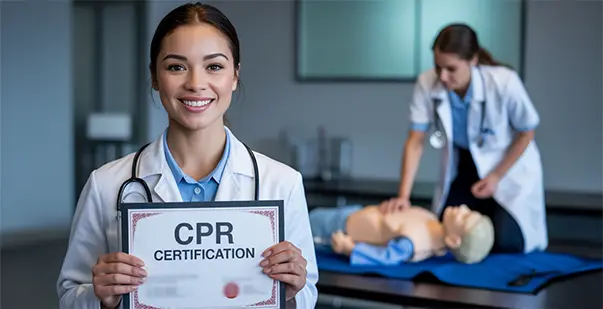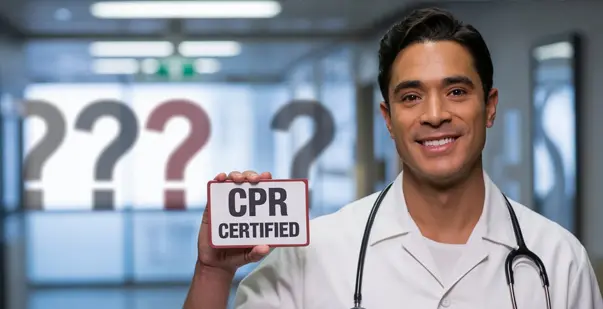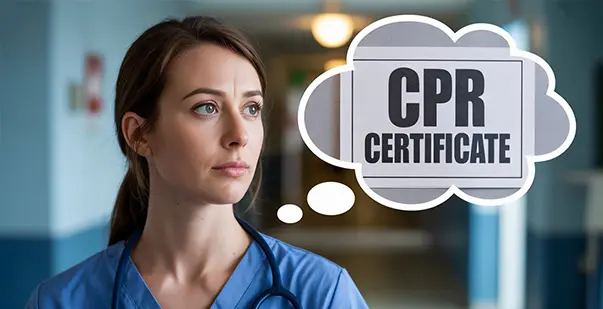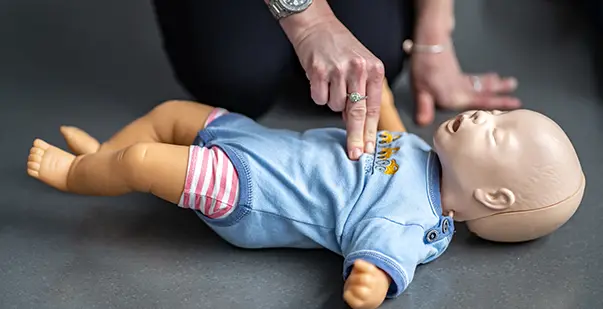In today’s times CPR certification for school teachers has become essential. It gives them the required skill set and the knowledge needed to respond to emergencies with efficacy. With CPR training, educators can administer life-saving techniques confidently. These are two major techniques including cardiopulmonary resuscitation and the use of automated external defibrillators (AEDs).
With the ability to recognize and respond to emergencies promptly, CPR-certified educators play a huge role in creating safer learning environments especially when there are children involved. Let us explore why CPR certification matters for educators, its benefits, and its requirements.
Why is CPR Certification Important?
CPR certification is crucial for educators. It makes them well-equipped with lifesaving skills for emergencies in educational settings. Here is why CPR certification is important:
Preparedness for Emergencies: Being trained in CPR makes sure that educators are prepared to respond swiftly and effectively to cardiac arrest or other medical emergencies. These emergencies may arise among students or colleagues.
Immediate Intervention: With CPR certification in hand, educators can quickly administer cardiopulmonary resuscitation (CPR). It provides vital assistance until professional medical help arrives.
Confidence in Crisis Situations: First aid and CPR certification make educators confident. It empowers them to take decisive action during emergencies and save lives within their school community.
By addressing these key aspects, CPR certification enhances the safety and well-being of both students and staff. It also leads to a more secure learning environment.
Read more:Need of CPR Programs for Schools & Teachers
How Does CPR Training Benefit Educators?
CPR training for educators has numerous benefits. It enhances their ability to respond effectively to emergencies involving children. Let us take a look at the top benefits:
Empowering Educators: CPR training empowers educators with the knowledge and skills to act as first responders in critical situations. It gives a sense of confidence and preparedness.
Enhanced Professional Development: By obtaining CPR certification, educators enhance their professional development. They also show their commitment to student safety and well-being.
Immediate Response Capability: CPR training enables educators to respond immediately to medical emergencies. To a major extent, it reduces the risk of adverse outcomes and saves lives.
With these benefits, educators become invaluable assets in maintaining a safe and secure learning environment for students and staff.
What Are the Requirements for CPR Certification?
Understanding the requirements for CPR certification is the key for educators who are looking to enhance their skills in emergencies.
Course Content: CPR certification courses cover essential topics such as basic life support techniques, and cardiopulmonary resuscitation (CPR) procedures for adults, children, and infants. This is also inclusive of automated external defibrillator (AED) usage.
Training Providers: Educators can obtain CPR certification from accepted training providers and recognized organizations. These providers give various training formats, including in-person classes and online courses. This helps accommodate different learning preferences and schedules.
Certification Renewal: CPR certification is valid for almost two years, after which educators must renew their certification. This is to ensure they maintain up-to-date skills and knowledge. Renewal also involves completing a refresher course and passing an evaluation to show competency in CPR techniques.
Read More: CPR Best Practices for Physicians and Nursing Staff
Where Can Educators Obtain CPR Certification?
Educators who are seeking CPR certification have many options for obtaining training from reputable providers. Educators can obtain the certification from the following places:
Accepted Organizations: Educators can obtain CPR certification from nationally accepted organizations. These organizations are recognized and adhere to the best standards and guidelines for CPR training.
Local Training Centers: Many local hospitals, community centers, and educational institutions host CPR certification courses. These centers offer in-person training conducted by certified instructors. The instructors have hands-on experience and practical skills development.
Online Courses: Some educators may prefer the flexibility of online CPR certification courses. Reputed organizations and training providers offer online platforms where educators can complete their coursework at their own pace. This also often includes interactive modules and video demonstrations.
Workplace Training Programs: Schools and educational institutions also organize CPR certification training for their staff as part of professional development initiatives. These programs cater to the specific needs of educators. They can also be conducted on-site for convenience.
By exploring these options, educators can choose the CPR certification pathway that best fits their schedule.
Read more: The Effectiveness of Online Life Support Certification in Assisted Living
Conclusion:
CPR certification for school teachers is important because it gives them the skills needed to respond effectively during school emergencies. Completing CPR training boosts confidence and preparedness. It benefits by helping educators act quickly in crises. Knowing the importance of CPR certification, its requirements, and where to get certified ensures educators are ready to create safer learning environments and save lives. So, stay informed, stay certified, and make a difference in your school community with CPR training.











